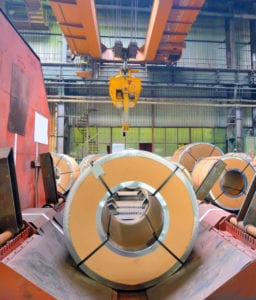To say carbon pricing is somewhat confusing is an understatement.
Carbon is not something you buy, so how does it have a price? It is not something you can see or smell. It does not have a look and feel to it. And it’s not something that can be used as a source of energy or fuel. The carbon we are talking about is a greenhouse gas (GHG) emission that most companies with an environmental strategy try to minimize.
I began looking at carbon emissions about 12 years ago when data centers started to be significantly large enough in size and scale to have a collective global carbon footprint. Schneider Electric quickly released the online tradeoff tools, Server Carbon & Energy Allocation Calculator and Data Center Carbon Footprint Calculator, to demonstrate the impact that data center efficiency, load characteristics, and location have on the carbon emissions. While this is useful for companies in the data center business, most companies will need to take a broader view on the best way to assess their own footprint and the best way to do that is through carbon pricing.
Sending a signal to take action
Carbon pricing is the process of fixing a price to those carbon emissions, to send a signal to companies to take action – either reduce emissions or pay the price. The process by which they pay a price is either through emissions trading system (ETS) or cap and trade or through a carbon tax.
Try the Tradeoff Tool: Building heating method comparison calculator now >
With cap and trade, governments cap the total level of carbon at a fixed volume within their jurisdiction and also allocate emissions permits to companies (maximum carbon they are allowed to emit). Companies can then buy permits (if they are emitting more than allowed) or sell (if they are emitting less than allowed) or even trade/barter these emission permits. This creates a market for carbon emission permits and a fluctuating market price based on supply and demand. Carbon tax is a defined tax rate on carbon emissions incurred as a penalty. In Sweden, for example, the carbon tax is €110($126)/tonne CO2e.
According to World Bank Group 2020 report State and Trends of Carbon Pricing, 61 carbon pricing initiatives are being implemented or scheduled. Of these initiatives, 46 are national and 32 are subnational, which covers 22% of global GHG emissions. In 2019, €39($45) billion was raised in carbon pricing revenues with more than 14,500 registered crediting projects to date.
But if you are in a location that does not implement a cap and trade or carbon tax, you should still be aware of your own carbon footprint and start thinking about the price your company would associate with carbon. Many companies (including 25% of the Fortune Global 500) have or are planning to implement an internal carbon price. They can use that price as a tool to guide decision-making in relation to climate change impacts, risks, and opportunities. Internal corporate carbon prices in use today are diverse, ranging from €1.7($2)/tCO2e to €781($900)/tCO2e with most falling in between €4.3($5)/tCO2e and €87($100)/tCO2e. However, the United Nations Global Compact encourages businesses to adopt an internal carbon price of at least €87($100)/tCO2e, which is their projection to keep GHG emissions consistent with a 1.5–2°C pathway.

Carbon pricing and commercial buildings
Some companies even adopt multiple carbon prices internally, to account for different prices across jurisdictions. For example, when deciding which energy source to use to power a factory that is in a different location, using a renewable energy source may not look attractive until you factor in your internal price that you established for carbon in that jurisdiction. Not every company has a factory, but most companies have buildings of some sort and the majority of these commercial buildings need to be heated year-round or seasonally at some point in the year. Building heat could represent a significant operating expense and is most likely a major contributor to a company’s carbon footprint.
Schneider Electric has just published a free, online tradeoff tool to help companies evaluate which building heating systems to use in order to reduce carbon emissions. The tool takes the available fuel types, the climate, the efficiency of different systems, and uses whatever internal carbon pricing value you choose. You can use it when designing a new building or to calculate return on investment to retrofit existing commercial buildings.
One thing is for sure, carbon pricing in its many forms will help companies understand the cost and value of limiting carbon emissions. This price on carbon may be official today in the form of a tax or limits or it could be your own internal value. Either way, real cash outlay or implied, understanding how much carbon your business generates and developing your own plan to mitigate it, makes for sound business practices in a sustainable way.




Conversation
To curb the carbon footprint of technologies, it is necessary to be able to correlate their economic valuation with their own footprint when they are put into service and to monitor their efficiency in their life cycle to reduce their cost by avoiding their obsolescence – this is what we do with our KP-One Solution on #Exchange.